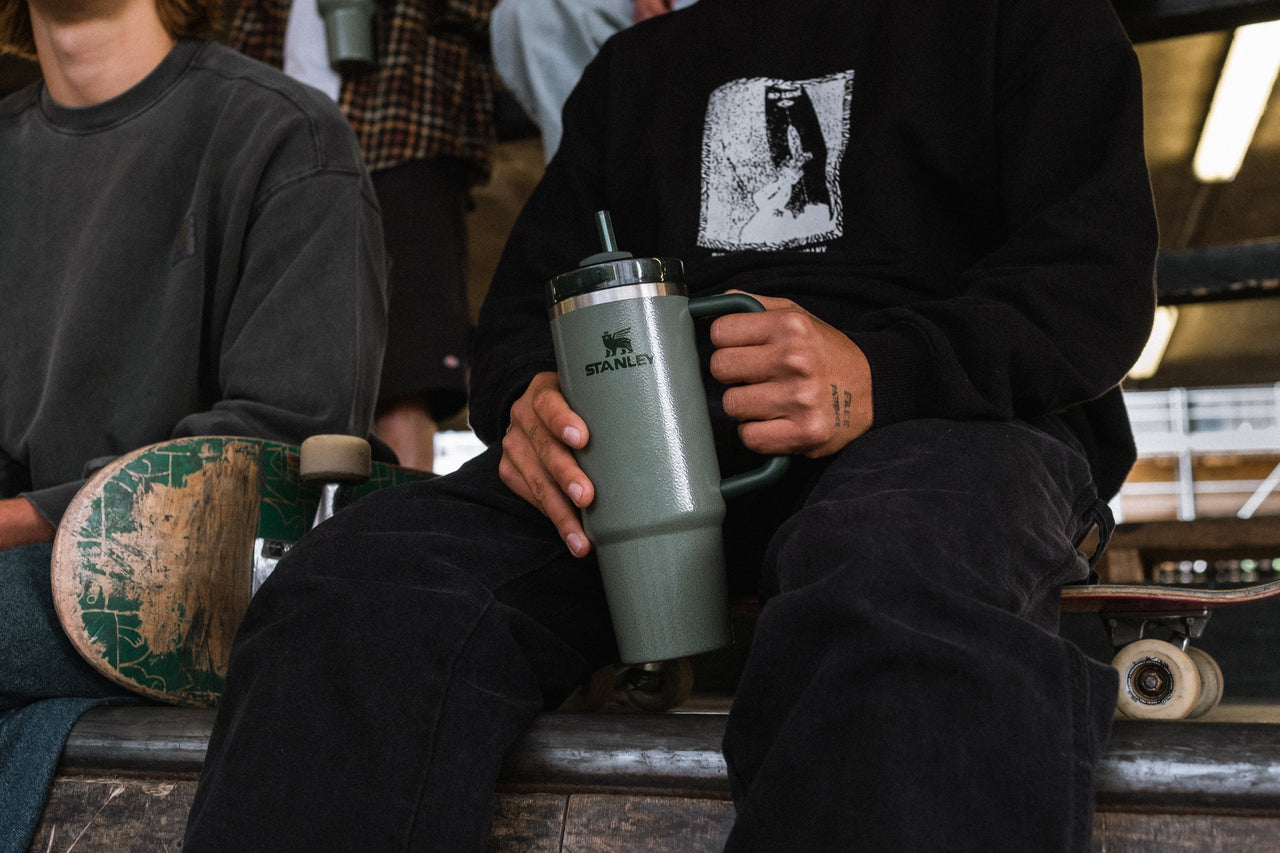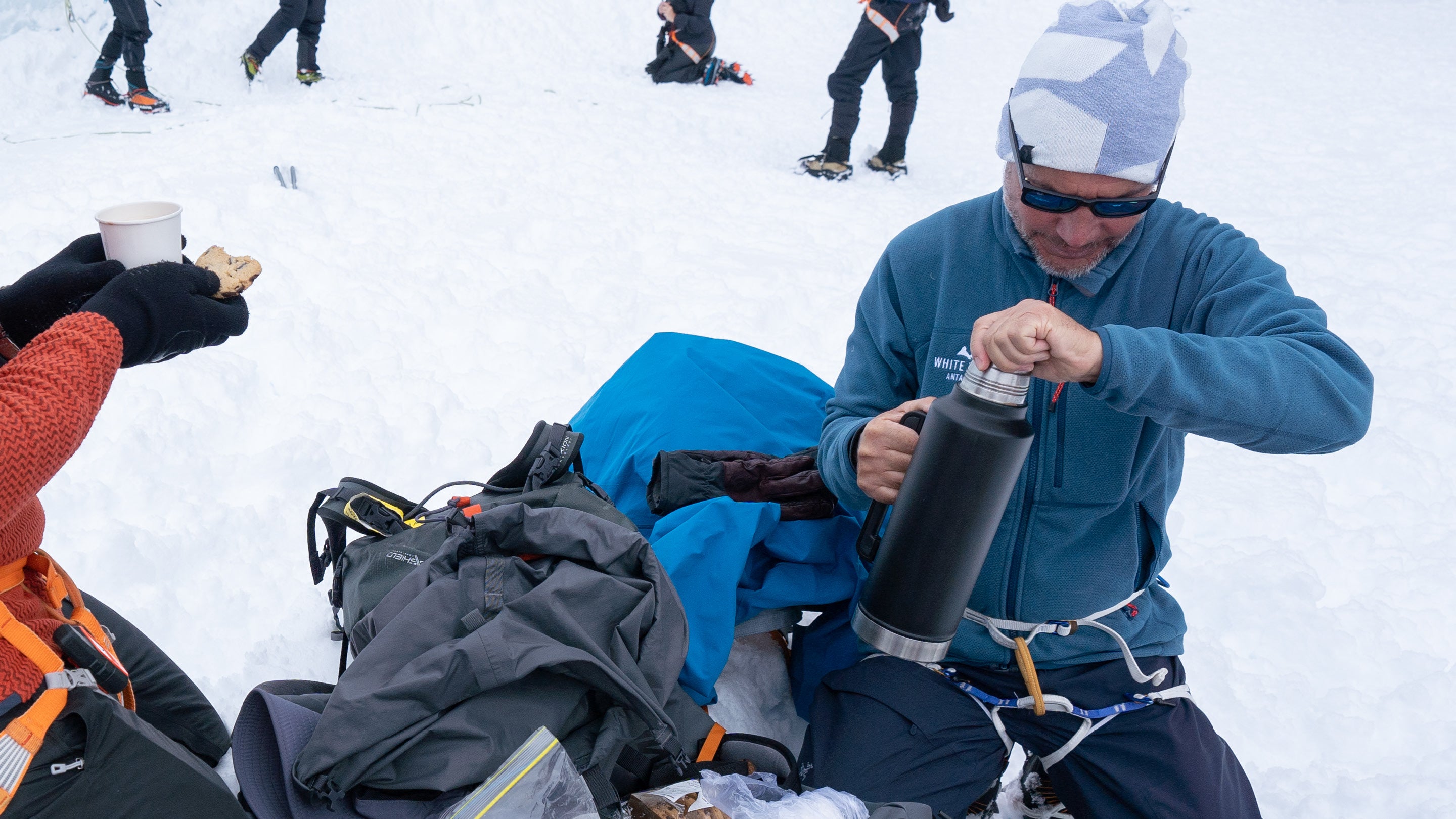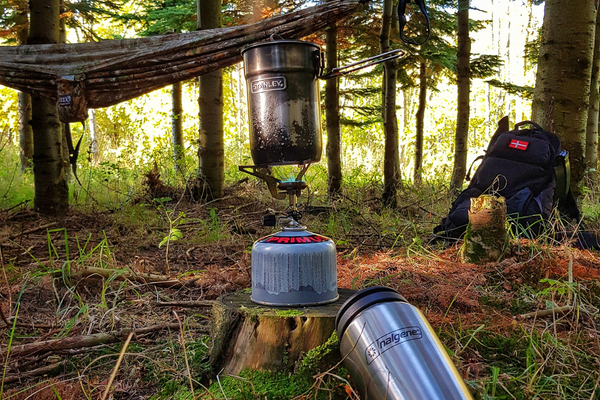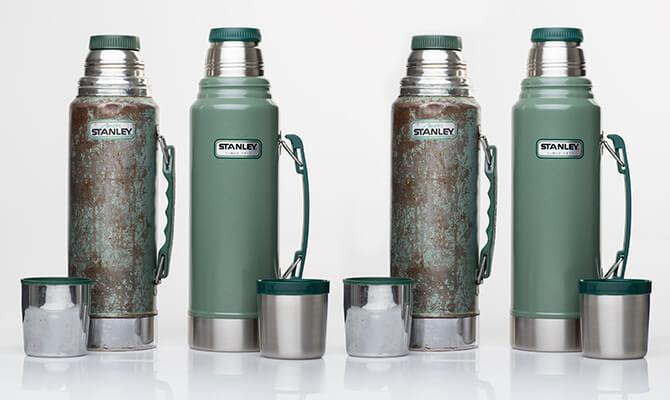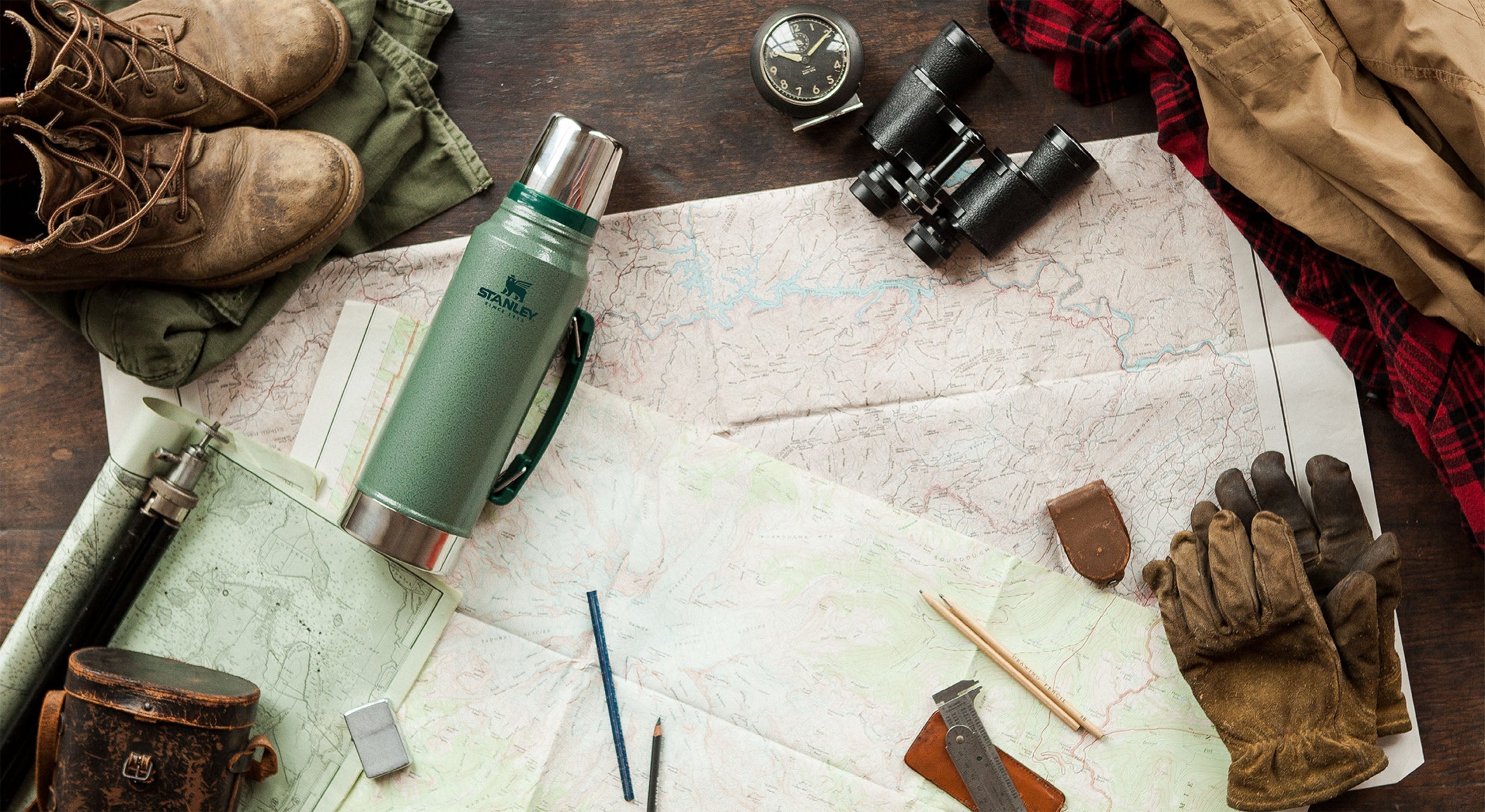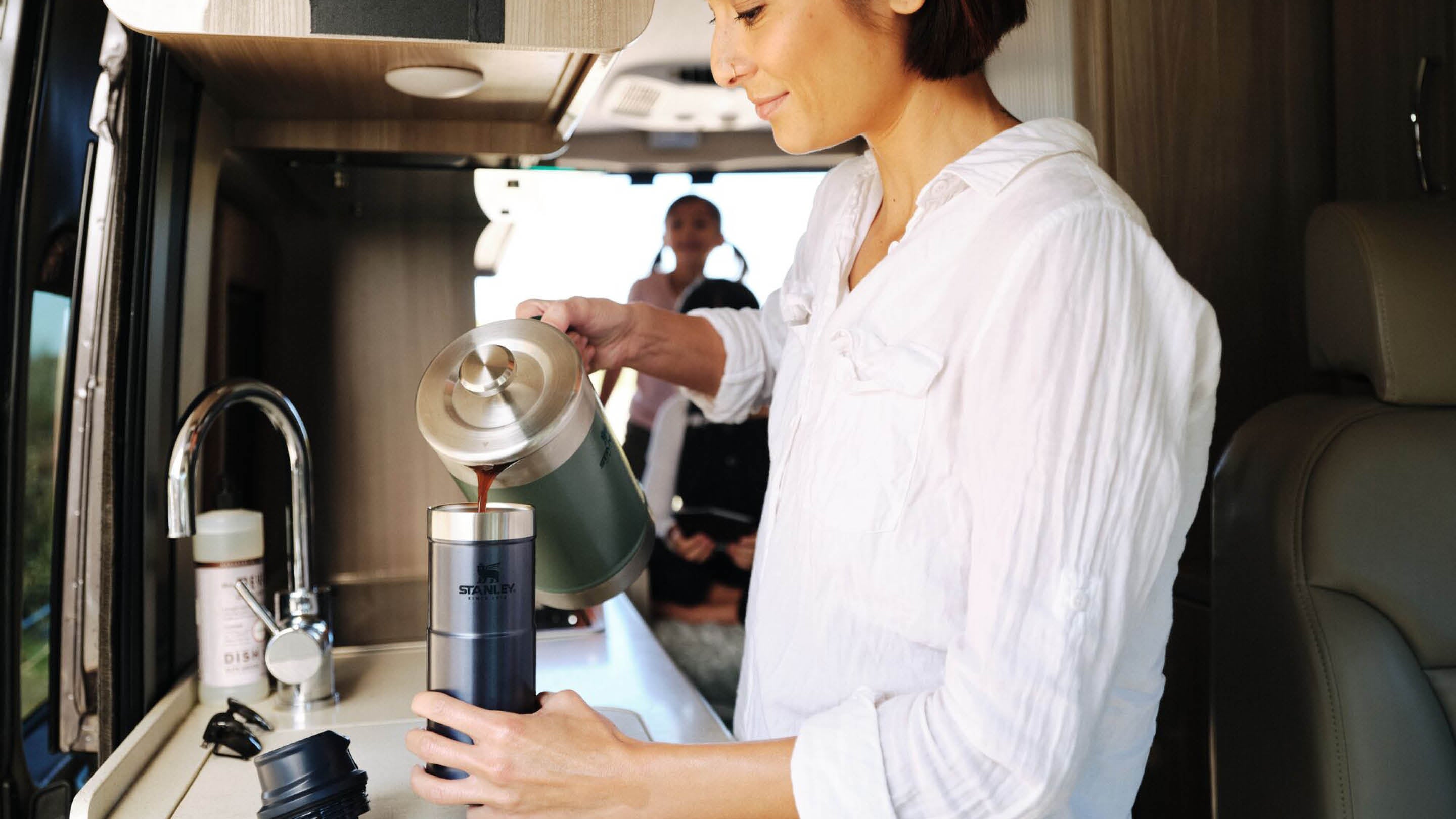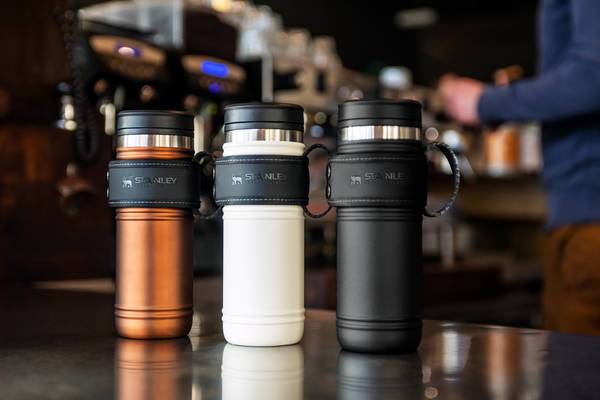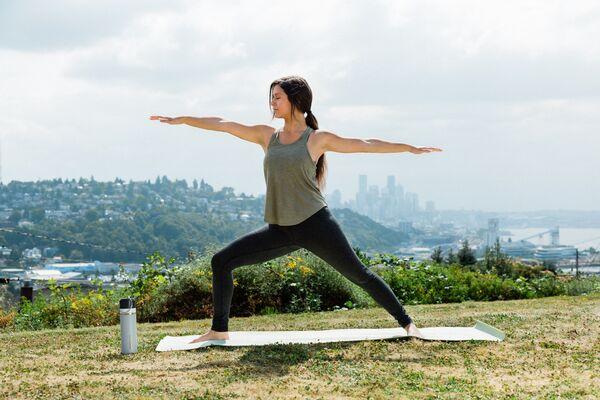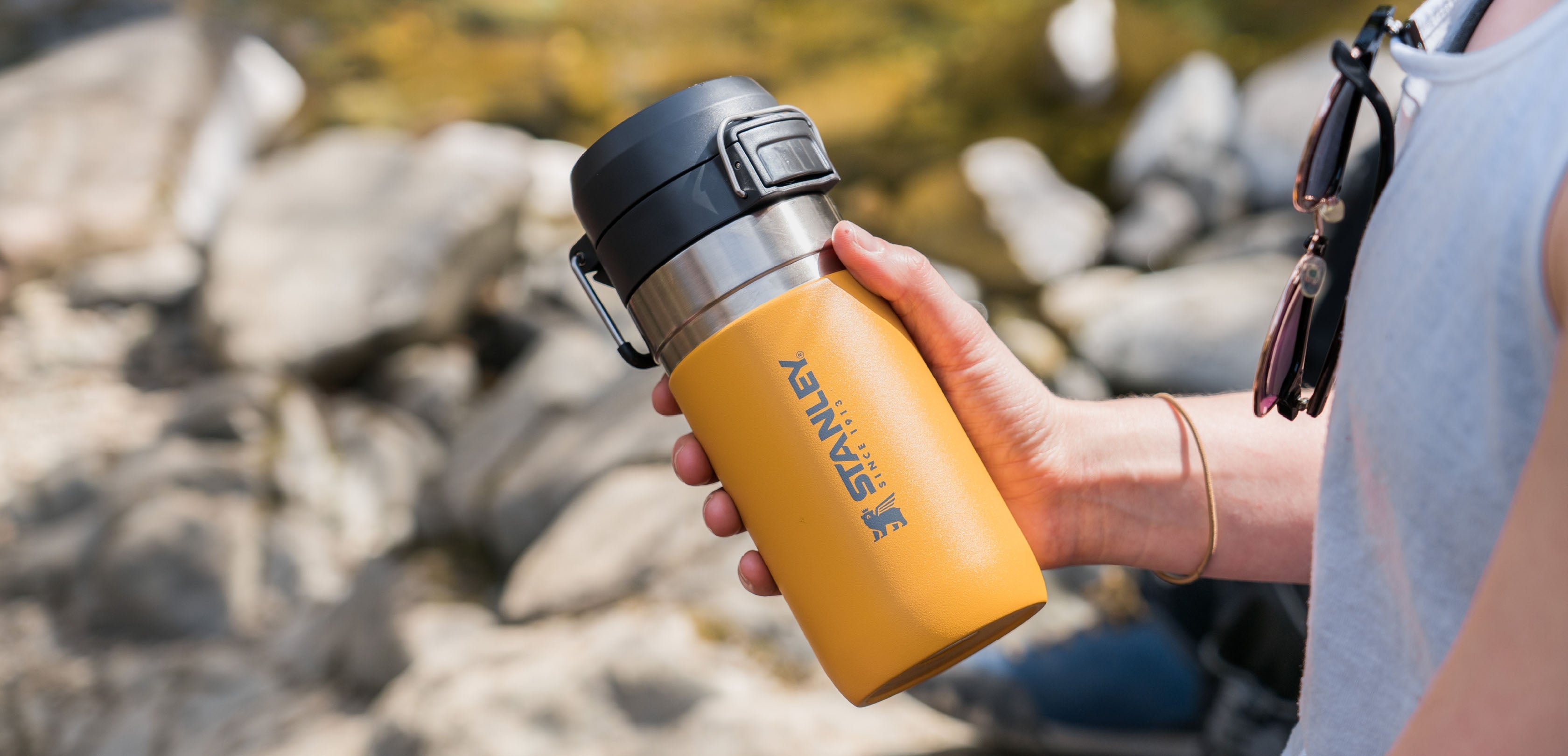
Guide to Staying Hydrated During Outdoor Activities
Staying hydrated is a key component to maintaining your overall health. Being properly hydrated helps your body in several ways, including regulating body temperature, preventing infections, improving sleep, delivering nutrients throughout the body, and boosting organ health. The importance of hydration also extends to your active performance. Hydration can help keep joints lubricated for ease of motion and prevent muscle fatigue, and decrease your risk of injury.
How Much Water Do You Need to Stay Hydrated?
According to health professionals, you should be drinking between 11.5 to 15.5 cups of water per day. You may have heard of the “eight cups a day” rule. While it can be suitable for some people, it generally doesn’t take into account exercise, overall health, pre-existing conditions, or weather changes that may require you to drink more water to stay hydrated.
A decent rule-of-thumb is that you should drink water (or other hydrating liquids) whenever you feel thirsty. Light-colored urine is also an indicator of proper hydration, while dark-colored urine can indicate dehydration.
Symptoms of Dehydration
Most Europeans are chronically dehydrated. This could be because of factors like not drinking the right kinds of fluids, or not drinking enough for your body type, and misinterpretation of dehydration symptoms. Dehydration is often misinterpreted as hunger, as they share many of the same symptoms. Dehydration symptoms include:
Fatigue;
Light-headedness or mild headache;
Dizziness;
Tight or sunken skin;
Dry mouth;
Dark-colored urine.
Some groups are more at risk for chronic dehydration. These groups include:
Young children: Young children, including infants, are at a higher risk of dehydration because they are at a higher risk for frequent diarrhea, vomiting, and tend to lose more body fluids from high fevers. Depending on their age, young children may not be able to determine if they’re thirsty or get themselves a drink. As a parent, you can combat this by introducing drinks with electrolytes into their diet, such as Pedialyte, and keeping track of their fluid intake. Before introducing anything new into your infant’s diet, make sure you talk with your pediatrician.
Seniors: Your body’s ability to reserve fluid, as well as your ability to acutely perceive thirst, declines as you get older. Seniors with mobility problems may also have a hard time getting water for themselves or using traditional cups. As a senior or caretaker of a senior, you can combat dehydration by increasing water intake and using drinking accessories like straws or spill-proof lids.
People with chronic illnesses: Many chronic illnesses increase your risk of dehydration, such as diabetes, cancer, and kidney disease. Certain medications can have diuretic properties, which require the user to increase their water intake to make up for the loss of fluids. Being properly hydrated can also help with cell reparation, which can benefit people with a chronic illness.
What Drinks to Consume
When it comes to staying hydrated, some drinks are better than others. Below are a few of the best liquids for hydration, especially when embarking on outdoor activities or exercise.
Water, Water, Water
Water is the best thing that you can drink, both during and after exercise or activity. The human body is about 60% water, therefore water is easily processed when consumed. It helps the body in a variety of ways, including digestion, cell replication, hormone manufacturing, and regulation, as well as preventing dehydration and maintaining general health.
Electrolytes
Electrolytes conduct electricity when dissolved in water and are essential for many bodily functions. Consuming drinks with electrolytes is particularly helpful during and after intense exercise — especially when you’re sweating. Some electrolyte drinks can have added sugars and food dyes that you may want to be aware of, depending on your dietary preferences or food sensitivities. Consuming electrolytes may also be useful during intense illness, such as the flu, where you may be losing excessive amounts of bodily fluids due to high fever, vomiting, or diarrhea. Fruits and vegetables are other good sources of electrolytes.
Herbal Teas
Tea is largely made of water, therefore non-caffeinated options, like herbal teas are a good choice for hydration. Herbal teas, including peppermint, chamomile, rosehip, and others, can have other health benefits on top of being hydrating. You can enjoy herbal tea hot or cold, and it can be a great substitute for less hydrating cold-weather beverages.
What Drinks to Avoid
While the myth that caffeinated beverages cause dehydration has been debunked, they still shouldn’t be your first choice when feeling dehydrated because of their other effects. Sugar crashes, feeling shaky or jittery, mild headaches, and nausea are all symptoms that can come from overindulging in the following beverages.
Coffee
Anything with high caffeine content, like coffee, produces a mild diuretic effect. While this doesn’t necessarily contribute to dehydration, caffeine overload can cause you to feel anxious, increase your heart rate, and induce headaches and fatigue. These aren’t ideal symptoms to manage when playing a sport, or doing any strenuous exercise.
Energy Drinks
Highly-caffeinated energy drinks can have much the same effect as too much caffeine. Additionally, research has shown that drinking energy drinks in excess can spike your blood sugar and create insulin tolerance. This can increase your chance of developing type two diabetes, which is a serious and lifelong condition.
Soda
Drinking soda every day can increase your risk of type two diabetes and heart disease by up to 26%. The increased sugars can cause a sugar crash before or during exercise, which can cause you to feel lightheaded, dizzy, weak, and even cause fainting.
While these drinks won’t cause dehydration specifically, they tend to produce the opposite effect of more hydrating beverages, like water and herbal teas, when it comes to activity performance and general health management.
Summer vs. Winter Hydration
Staying hydrated in the winter is just as important as doing so in the summer. It can help you battle off cold and flu season, help keep your skin from cracking due to dry air and help your body regulate temperatures.
Staying properly hydrated during winter activities, such as skiing, sledding, or ice skating, is still important to reduce the risk of injury and muscle fatigue. During winter, you can swap out your usual water bottle for a vacuum-insulated bottle so that you can easily bring warm beverages to your winter adventures.
Why Am I Not Staying Hydrated?
If you feel like you drink a fair amount of water, but are still experiencing dehydration symptoms, there could be multiple reasons. Not drinking enough water for your body weight, sweating without replenishing lost electrolytes, and drinking too much caffeine are all reasons you might not be feeling hydrated. You can counteract dehydration with a few mindful routines:
Bring a water bottle: Getting into the habit of bringing a water bottle with you to all of your activities, including work, group activities, and other events can help you get in the habit of drinking more water. Insulated growlers or mugs are popular choices because they can keep your beverage hot or cold for hours.
Track how much water you consume: There are several free apps that can help you do this, as well as water bottles designed with a specific number of markers to help you keep track of hydration. You can also start a routine around your daily activities, such as one glass of water an hour while you’re at work to help you keep track.
Hydrate before, during, and after a workout: It’s just as important to be hydrated before a workout as it is during and after. Being properly hydrated before a workout allows you to decrease muscle fatigue and even see improvements in your stamina while staying hydrated during a workout allows you to replace vital fluids lost through sweat. Hydration after a workout can expedite the recovery process.
Bring enough water: For family or group outings, especially those with kids or pets, plan ahead to make sure you’re bringing enough water for everyone. You should take into account not only how many people are coming, but also the types of activities you’ll be doing. Higher intensity activities likely mean elevated thirst for everyone. Being prepared with enough water for everyone is a great way to ensure that your outdoor trip is safe for you, your animals, and your group members.
Click here to read our other How-To Guides.










